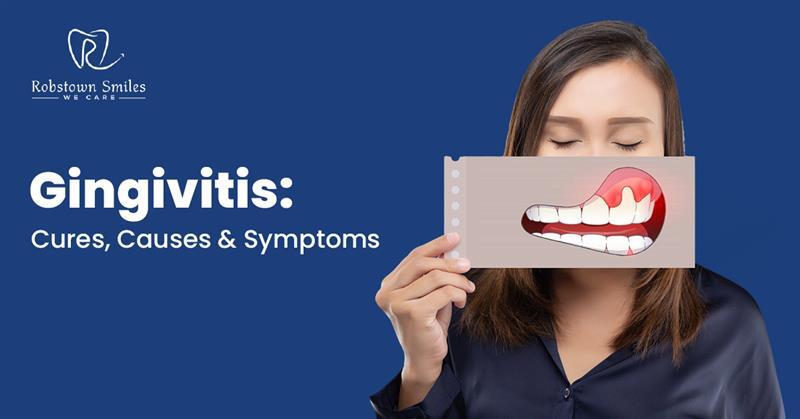Inflammation of the gingivae or the gums that surround the teeth, is a frequent and mild form of gum disease known as gingivitis. It frequently shows up as bleeding, swelling and changes in gum color, particularly while brushing or flossing teeth or biting into hard foods. Plaque, a sticky film of germs that builds up in places that are hard to reach around and between teeth, is the main cause of gingivitis.
Gum irritation from this bacterial growth causes inflammation and the formation of tiny pockets between the gums and teeth. If treatment is not received, these pockets may enlarge and develop into more serious diseases like gum disease, which can lead to tooth loss. Thus, gingivitis must be identified and treated as soon as possible in order to preserve dental health.
What Causes Gingivitis?
- The team understands that plaque, a sticky layer of bacteria that builds up on and between teeth, particularly in places that are hard to reach, is the main cause of gingivitis. Inflammation results from this bacterial coating irritating the gums.
- Little “pockets” that grow between the gums and the teeth over time may deepen and eventually turn into periodontitis if they are not treated. They also point out that gums are more susceptible to certain risk factors.
- Smokers, for example, typically have less blood flow and nutrients reaching their gum tissue, which makes their gums more vulnerable to infection.
- Other contributors? The underlying bacterial inflammation can be made worse by hormonal fluctuations, inadequate nutrition and even some drugs.
Symptoms of Gingivitis
- Gums that are red, swollen or bloated
- Bleeding gums, particularly during brushing or flossing
- Gum line tenderness, occasionally accompanied by discomfort when chewing
- Bad breath that remains even after brushing your teeth
How Is It Possible to Treat or Cure Gingivitis?
- Daily oral hygiene involves using a soft-bristle brush for at least two minutes twice a day.
- Frequent flossing helps get rid of plaque where a toothbrush cannot reach, such as in between teeth and beneath the gum line.
- It is essential to see a dentist for cleanings and examinations. Dental practitioners are able to remove calculus, scale and polish teeth and identify early indications of gingivitis.
- To assist in reducing bacterial development, antiseptic mouthwashes or gels (such those containing chlorhexidine) are sometimes advised.
- Lifestyle Changes: Managing risk factors (such as hormonal fluctuations), giving up smoking, and embracing a nutritious diet high in vitamins, particularly vitamin C, all have a significant impact.
Conclusion
Plaque accumulation and inadequate dental hygiene can cause gingivitis, a mild but potentially dangerous gum disease that is completely avoidable and curable with the right treatment. Robstown Smiles stands out to residents as a neighborhood dental office dedicated to providing complete dental care that integrates the most recent preventive and therapeutic techniques in order to assist patients in attaining and preserving ideal gum health.
A confident smile and continued dental health are guaranteed when you consult with a reputable Dentist in Robstown, TX, like those at Robstown Smiles.

